Echeveria imbricata is a hybrid of Echeveria Secunda with Echeveria Gibbiflora ‘Metallica’. This is commonly called blue rose Echeveria.
You could spot Echeveria imbricata more often among the Echeverias plants and it is a quite famous plant among the succulent plant fans.
Once the Blue rose plant grows, the leaves at the base of the stem will get dry. On the other hand, healthy and fresh leaves will be made at the top of the plant.
The leaves of the blue rose comprises a powder which safeguard the leaves from the sunburns.
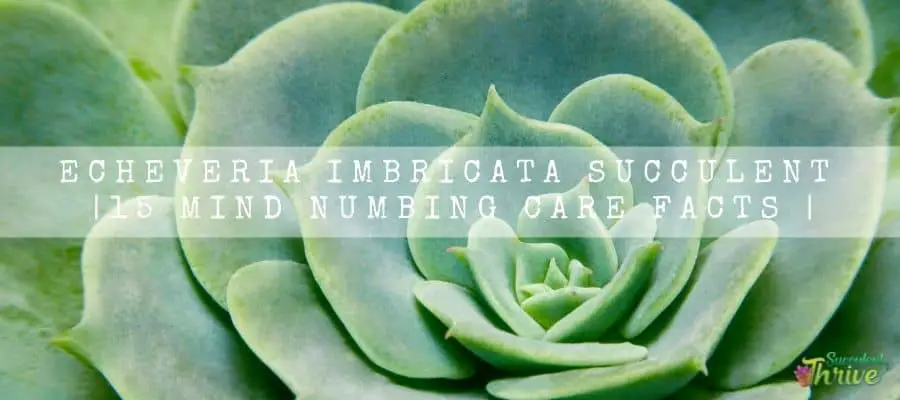
How do I identify a Echeveria imbricata?
We could identify the Echeveria imbricata simply by looking at their leaves. Leaves are larger in size. They will be round shaped. Moreover, the leaves will be fleshy and powder blue in color.
Further you could spot pinkish tips on the edges of the leaves. They tend to develop pink tips once you expose them to bright intense sunlight.
Over time, when the plant grows, they tend to develop the rosette. Rosettes could be larger as they could grow about 20 inches wide.
They will form closer to each other. Moreover they can propagate by themselves whilst producing fresh rosettes from the offsets.
It is an attractive plant with a striking position. Many people use them as garnish and decorations for the cakes. That is due to the vivid colors they have.
One more significant factor of their leaves is that they generally carry a fine farina layer. This is very useful for this plant, as it helps to avoid the plant from getting dehydrated.
The farina layer is white and a powdery layer, it covers the entire surface of the leaf. Stems would be about 6 inches tall when they become fully matured.
In terms of flowering, they usually produce flowers in a magnificent pink color. They would stay alive on the plant right throughout the summer.
Size
Once the Echeveria imbricata grows, they will rise to 8″ (20 cm) in height. Whilst on the other hand they would be 6″ (15 cm) in width.
One look care guide
| Botanical Name | Echeveria imbricata |
| Common Name | Blue Rose, |
| Plant Type | Succulent |
| Mature Size | 8″ (20 cm) in height.be 6″ (15 cm) in width |
| Sun Exposure | Full Sunlight to Partial sunlight |
| Soil Type | Well draining |
| Soil pH | acidic, alkaline, or neutral. |
| Bloom Time | Sumer |
| Flower Color | Pink |
| Hardiness Zones | 9a -6.7°F (or 20°F) |
| Native Area | Mexico |
| Toxicity | Non toxic |
| Average price | 20 USD |
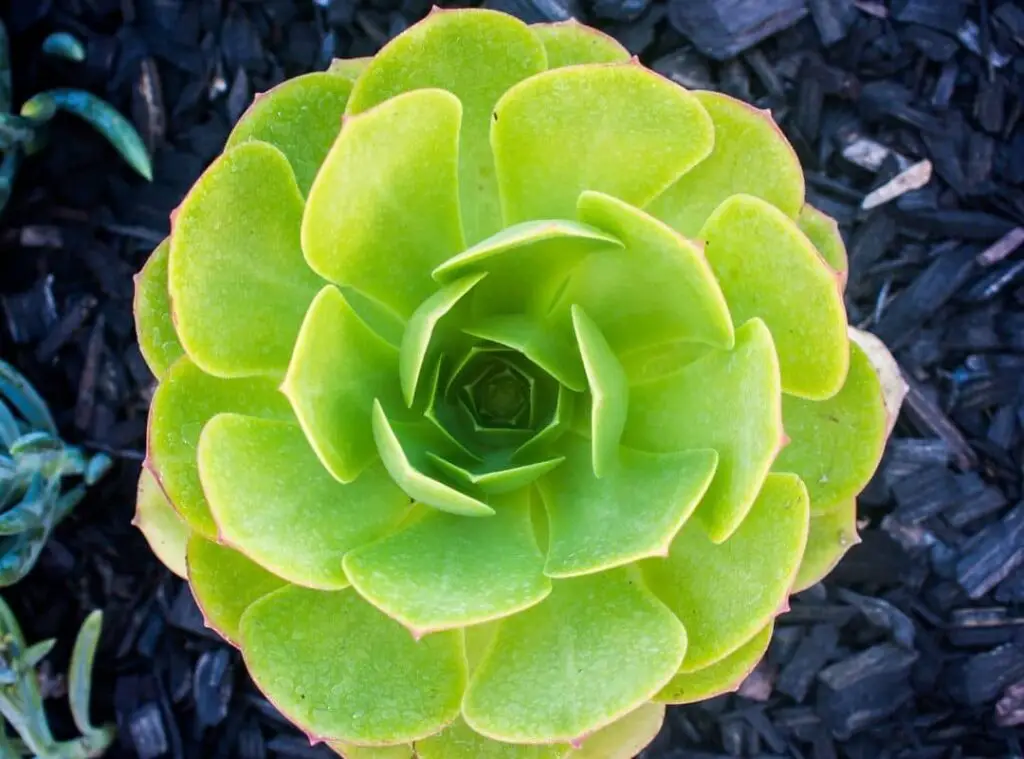
Care guide
Light Requirement
Echeveria imbricata would love to have sufficient levels of sunlight. In case the plant is running short of adequate sunlight, they will go through etiolation.
That is literally, the plant will lean towards a certain direction where they can grab sunlight. That is more like someone is stretching towards a certain direction where they can grab something.
If you own blue roses in your succulent garden , best is to provide six hours of morning sunlight daily. Blue powder of the plant could be useful here as it helps to safeguard the plant from the extreme sunlight.
However, refrain from exposing the plant to afternoon sun, as chances are that the blue powder could also burn in the intense high levels of sunlight.
Echeveria imbricata can not survive in cold weather conditions. It is advisable to grow them as indoor plants if you live in a place where the temperature drops to 20° F or -6.7° C.
You may locate it somewhere near a window so that the plant can absorb the essential level of sunlight without any disturbance.
Temperature and humidity
These plants would prefer to have heat and would survive in warmer conditions. It does not handle cold well.
Literally, it is not possible to thrive in temperatures when it drops to 20 degrees Fahrenheit and below.
These plants cannot tolerate extreme cold situations either. Avoid exposing them to heavy frost especially.
If not, you should cover the plant to secure it. Otherwise, you should plant them under shelter. Moreover, as mentioned above, you may bring them indoors.
If you have planted Blue rose as an indoor plant, make sure that you have given it a hot room along with a controlled temperature.
Do not expose it for sudden major changes in temperatures. As it could badly affect the plants.
Is it cold hardy?
Blue rose plants are not cold hardy
USDA hardiness Zone
They would prefer to grow in USDA hardiness zone 9a -6.7°F (or 20°F) .
Watering Requirement
This Echeveria type usually tends to grow in hot and dry conditions. As such, they don’t require an enormous amount of water. It is a type of plant which could thrive in drought conditions for some times.
Consider that you have planted them in pots, then they should have adequate draining holes. If the water is not moving through and the drainage is poor, water will retain in the pot. That is not good for the plant.
When it comes to watering these plants, you should water them thoroughly and deeper. Ensure that the water is well soaked through the soil. After that, you can let them wither totally.
Before watering again, first inspect whether the soil is dry or soggy. If it’s dry, you should resume watering. If the plant is in soggy and damp soil, chances are that there would be root rots.
You can use a simple trick to observe whether the soil is wet by simply placing your finger deeper into the soil . If you feel like it is dry you may go ahead with watering.
Alternatively, you could utilize a wooden skewer. When you take it off and if you see it is dry, proceed with watering the plant.
You could be tricky in placing the plant in a saucer of water for a few hours. That will allow the roots to absorb the required amount of water through their draining holes.
Do not leave it that way for too long though.

Soil Requirement Type / pH
When it comes to soil mix type for planting Echeveria imbricata, it is vital to have a good draining system in the soil. These plants hate to stay in water.
Hence why it is vital to have adequate draining holes so that the water could move through.
When you select the soil mix, you could use a blend of cactus potting soil and mineral grit. You could mix them 50 % of each.
mineral grit should consist of Coarse, perlite or pumice. They will lead to excellent drainage in the pot.
Soil ph should be ideally acidic, alkaline, or neutral.
Flowering and Fragrance
Echeveria imbricata bloom during early summer. The flowers will be bell shaped and they will be developed in several clusters. They will be orange-red in color and tiny.
Flowers of this plant do not carry any scent.
Pot size Potting and Repotting
Best is to use a ceramic pot unglazed for planting blue rose plants. This will be a more porous material compared to others such as plastic.
Along with this, ensure that you grow them in a pot which has adequate drainage holes which could affect excellent drainage. You could drill more draining holes if there are not enough holes.
You should report if it is necessary and you should do it in warmer seasons. You may repot the plant for the first time, if you have purchased it from the store.
Firstly check whether the soil is completely withered. Afterwards, take off the plant smoothly. Clean the old soil around the plant.
You should remove the rotted , dead roots during this activity. You could treat those cuts with fungicides.
Plant it in a new pot along with a proper soil mix which is well draining. Leave it for about one or two weeks. After that you may resume watering lightly.
Where to Plant?
Blue roses would require a strong level of light. You may plant it in a garden and it should be ideally a place where it gets enough sunlight. Best is to provide full sunlight to partial sunlight.
However, in case the temperature of your area drops to the above extent, the best thing is to plant them in containers and bring them indoors.
Further You could cultivate them in rock gardens, succulents gardens.
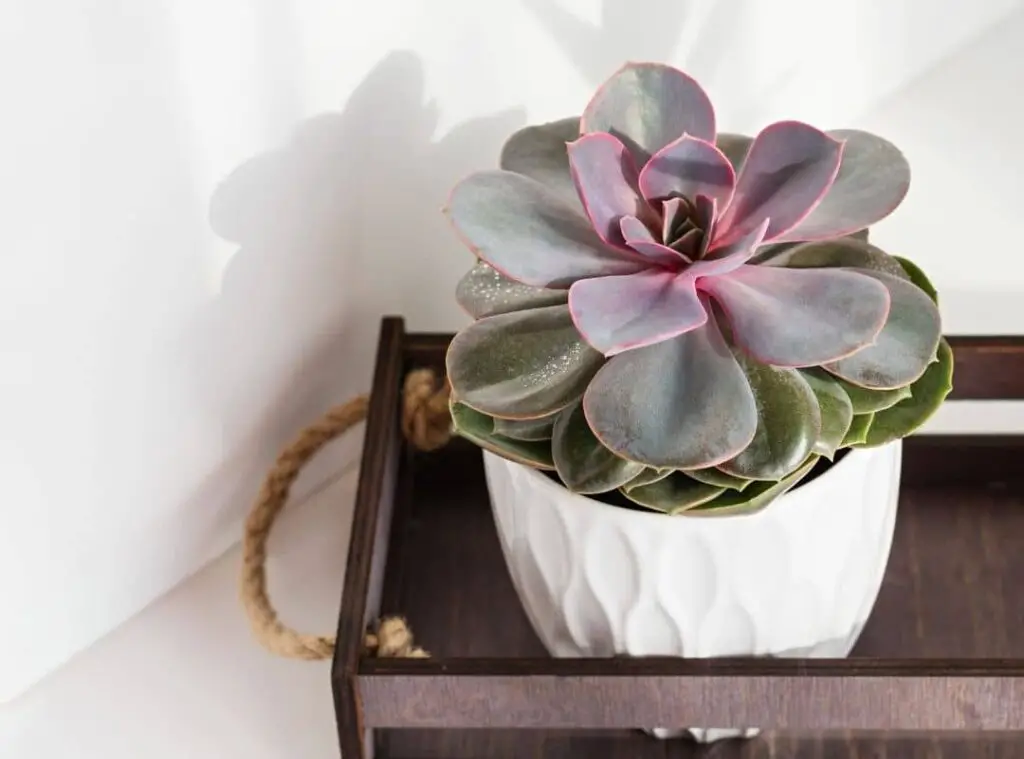
Fertilizer and time of year
Blue Rose succulent doesn’t require feeding. But if you think your plant needs some fertilizer you can add it once a year in the beginning of the growing season.
Dormancy
They are winter dormant plants.
Other plants Pairs Well With
Blue rose plants could make a great pair with Senecio serpens Blue Chalksticks.
Can be toxic to pets
Blue Rose plants are not poisonous for humans as well as for domestic pets.
Common bugs and illness Issues
This is a disease free plant. They do not have any major concerns in terms of diseases.
Nevertheless, be vigilant on pests attacks such as aphids and mealybugs. Ensure that you observe your plant constantly. If you spot any white cottony spots, they could be mealy bugs.
To treat this you may use insecticides such as neem oil. Do not spray water at your blue rose plant as a remedy for aphids.
Special Care tips
These plants tend to grow towards the direction where they can grab the sunlight. So, you could rotate the pot to make sure that all parts of the plant get adequate sunlight.
Alternatively, you could provide a grow light also to supply them with additional light.
Do not over water the plant. You could be tricky in placing the plant in a saucer of water for a few hours. That will allow the roots to absorb the required amount of water through their draining holes
These are easy to care for plants. simply fulfill their basic requirements and they will reward you with a great plant.
Make sure that you remove the dead leaves from the plant. If not pests could occupy those areas.
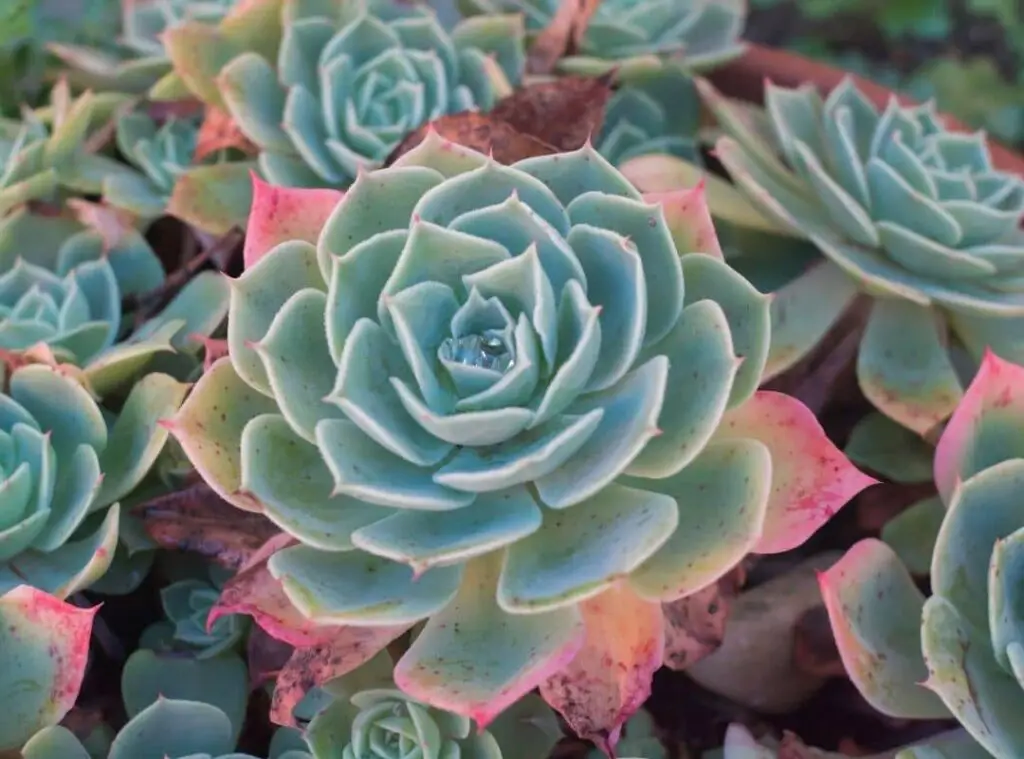
How do you propagate an Echeveria imbricata?
There are two methods of propagating these plants. . They are through offsets and through their leaves.
How to propagate Blue Rose through leaves
Firstly, obtain a leaf from the mother plant. It has to be a healthy leaf. Please note that when you take off the leaf from the plant, there should be no parts of the leaf remaining on the plant. ensure that you take the full leaf.
Leave it for two days to let it become callous. Finally you could go ahead and plant them in a well draining soil. Water them when the soil is completely withered.
How to propagate Blue Rose through offsets
These plants form little offsets. However you have to wait for several years until your mother plant produces offsets.
You may trim those offsets from the plant whilst using a sharp knife which is clean, sterilized and with good hygiene. When you take these off, make sure that you clean the soil around them.
Leave it for two days to let it become callous.Finally you could go ahead and plant them in a well draining soil. Water them when the soil is completely withered.
Echeveria imbricata plant benefits
This will be quite handy for rock gardens as well as for succulent gardens. Further you could grow them in cute looking containers as well as in pots too. That will be one great choice for that.
Additionally, they would look great in succulent arrangements as well.
Moreover,many people use it to garnish and decorate the cakes as well.
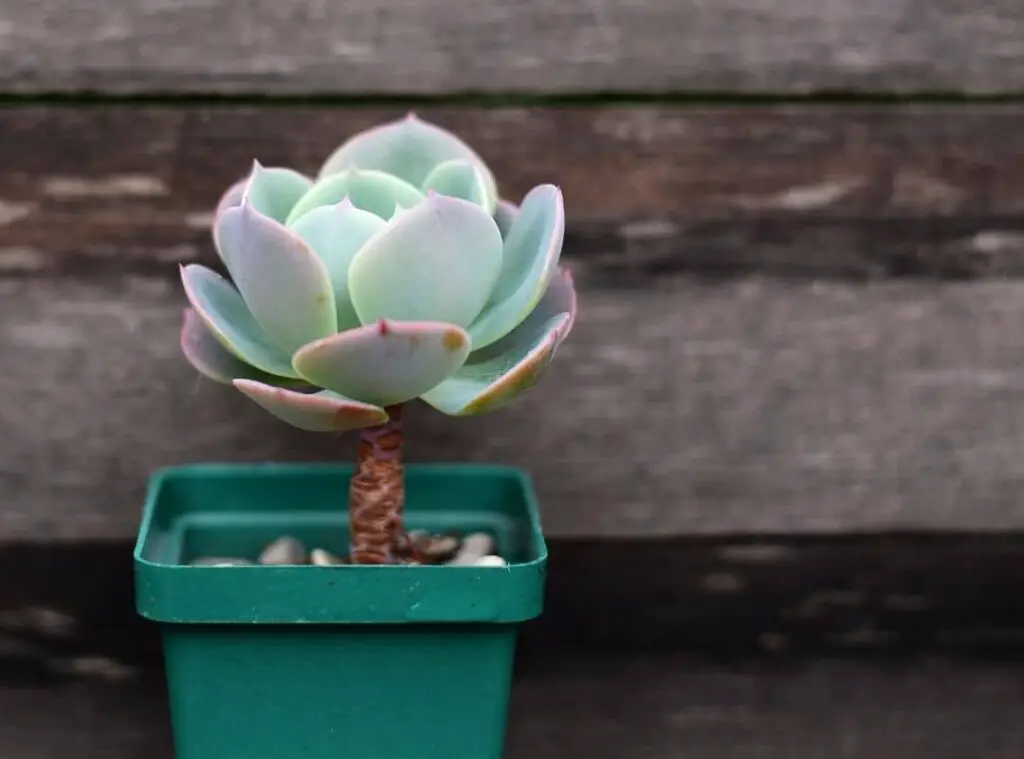
Related questions
Is Echeveria imbricata an indoor plant?
You could grow this plant indoors as well as outdoors too. When we grow them indoors, make sure that they get adequate sunlight for the proper growth of them.
Is Echeveria imbricata toxic?
Blue Rose plants are not poisonous for humans as well as for domestic pets.
Does Echeveria imbricata need direct sunlight?
It is not mandatory to provide them direct sunlight. These plants are not very choosy. You could expose them for ideally full sunlight in the morning and for partial sunlight in the evening.
If you consider a plant which you have grown indoors, ensure that they get the bright sunlight during the most of the day.
You should ideally place them near a window so that they can get enough sunlight.
Should I mist my Echeveria imbricata?
During propagation, you could mist the soil of the blue rose plant slightly when it’s totally dry.
Read Next: Aeonium Zwartkop | 7 Things You Probably Didn’t Know About |
